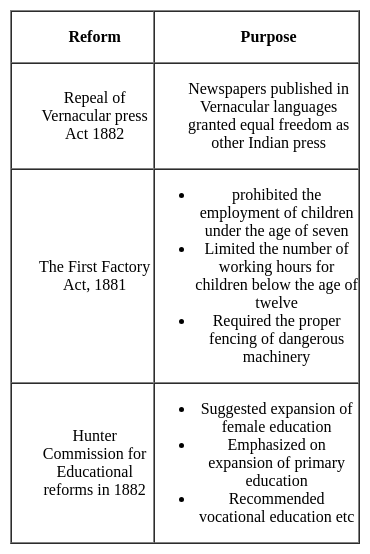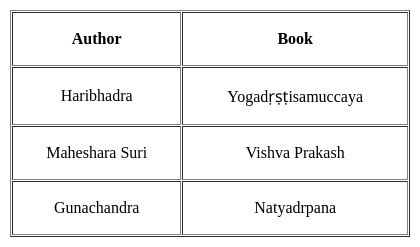Kerala SET Paper 2 Mock Test - 2 (History) - KTET MCQ
30 Questions MCQ Test Kerala SET Mock Test Series 2025 - Kerala SET Paper 2 Mock Test - 2 (History)
Consider the following statements:
1. Burial techniques determine the socio-economic differences amongst people living within a particular culture.
2. Harappan people did not believe in an afterlife.
3. The Higher denominations of weights were binary (1, 2, 4, 8, 16, 32, etc. up to 12,800), while the lower denominations followed the decimal system.
Which of the above statements is/are incorrect?
Consider the following statements related to Wellesley's administration:
1) In the six years of Wellesley's administration, the army accounted for 42.5 percent of the Company's total expenditure.
2) Wellesley's administrative measures were restricted to the affairs of the Company and had nothing to do with the commercial and military affairs of the Indian ruling families.
Which of the statement/s given above is/are correct?
Given below are two statements, one labelled as Assertion (A) and the other as Reason (R):
Assertion (A): Lord Ripon introduced the Ilbert Bill.
Reason (R): This put back the Vernacular press on a footing of equality with the English press.
In light of the above two statements, choose the correct answer from the options given below:
Who among the following is a writer of the biography of Jawahar Lal Nehru?
Who of the following Muslim leaders called the partition as ‘an act of treachery on the part of Congress’.
Compare and contrast the prevailing theories regarding the Harappan decline, analyzing the strengths and weaknesses of each.
Consider the statements A, B, C about Janapadas and choose the correct answer:
A. The word janapada literally means the land where the jana set its foot, and settled down.
B. Purana Qila in Delhi, Hastinapura near Meerut, and Atranjikhera, near Etah, are examples of Janapada.
C. People of Janapadas lived in huts and kept cattle as well as other animals.
Which aspect of the INA's formation and operations demonstrates the complexity of international alliances during World War II?
At which of the following places the Dutch established their earliest factory in India?
Consider the following statements.
- Indian National Army was formed by Subhash Chandra Bose.
- The INA founded the first provincial government of free India at Singapore.
Choose the correct statement.
Which of the following about Minto-Morley reforms is not correct?
1) The act provided for non-official majority in the provincial Legislatures
2) It divided the Provincial administration subjects into reserved and transferred subjects
Consider the following statements:
1. The French were the last to come to India in search of trade opportunities.
2. The Portuguese were the first European community to discover a direct sea route to India.
3. Queen Elizabeth I, was a shareholder of the British East India Company.
Which of the statements given above is/are correct?
Which of the following is / are correct statements about Sarojini Naidu?
She was first woman to become President of Indian National Congress
She was first woman to become the governor of an Indian state
She was awarded by British “Kaiser-i-Hind medal” for her contribution towards welfare of World War -I victims
Select the correct option from the codes given below:
Consider the statements (A) and (B) about 'Provincial Autonomy' and choose the correct option.
(A) The government announced elections to the Provincial legislatures in 1937.
(B) After Incoming results, the congress formed governments in 7 out of 11 Provinces.
Which of the following is the correct chronological order of rulers of the Pala dynasty?
1. Devapala
2. Gopala
3. Dharmapala
4. Ramapala
Under whose General Governorship did East India Company transformed from one of the political powers in India to supreme power in India?
With reference to the Permanent Settlement of 1793, consider the following statements.
1) The man who planned the system was John Shore, who succeeded Cornwallis as Governor-General.
2) The zamindars were not only to act as agents of the government in collecting land revenue but also to become the owners of the entire land in their zamindaris.
3) Their right of ownership was transferable but not hereditary.
Choose the correct statements.
Match List –I with List – II, and select the correct answer from the codes given below:
List – I
A) Subhas Chandra Bose
B) Vallabhbhai Patel
C) Iqbal
D) Batukeshwar Dutt
List – II
1) Throwing of the bomb in Central Assembly
2) Haripura session of Indian National Congress
3) Operation Polo
4) Allahabad Session of Muslim League, 1930
Codes:
Which of the following had started the Public Works Department in India in 1848?
Match the following.
State
I. Awadh
II. Hyderabad
III. Bengal
IV. Kerela
Founder
a. Nizam-ul-Mulk Asaf Jha
b. Murshid Quli Khan
c. Saadat Khan Burhan-ul-Mulk
d. Martanda Varma
Which of the following statement is/are correct?
1. The Aham and Puram poems of Padinen Kilukanakku group are the oldest Sangam composition.
2. Thirukkural (Kural), dealing with ethics, belongs to the Post-Sangam period.
Nalanda University was founded by which of the following ?
Match List I with List II, and select the correct answer by using the codes given below the lists:
FESTIVAL
1. Navreh
2. Cheti Chand
3. Ugadi
4. Rongali Bihu
PLACE
a. Assam
b. Sindh
c. Kashmir
d. Andhra Pradesh
Codes:
















